Australia: Great Ocean Road or Great Ocean Walk?
The Great Ocean Road is Australia’s famous coastal drive. Millions of tourists have traveled the Great Ocean Road by car or by bus on their Australian holidays. However, travelers can also explore this coastal landscape on the Great Ocean Walk–one of Australia’s top long-distance hikes. So what’s the best choice: driving the Great Ocean Road or hiking the Great Ocean Walk?
Driving Option: Great Ocean Road
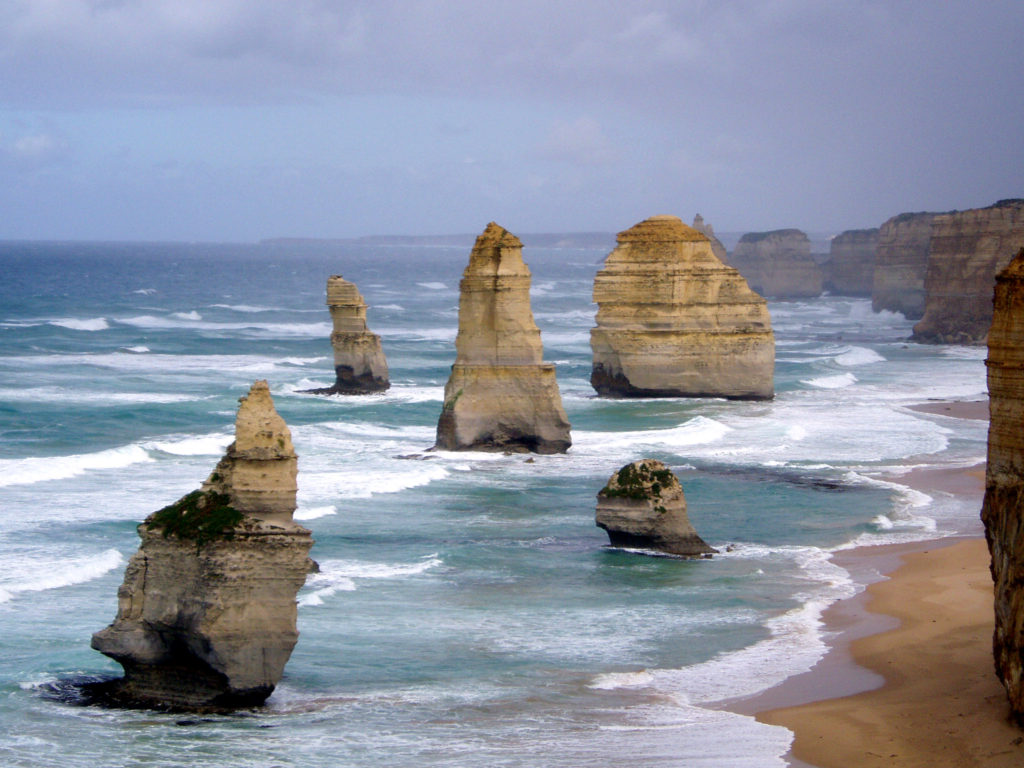
Most travelers stick to the road. The Great Ocean Road is the quintessential Australian road trip. It officially begins near Torquay, a famous surfing town about 100 kilometers southwest of Melbourne. From there, the Great Ocean Road stretches west for almost 300 kilometers, unofficially ending near Port Fairy. Most travelers do the Great Ocean Road as a side trip from Melbourne, either by car or by bus tour.
This stretch of Victorian coast is worth seeing if you’re visiting Melbourne. It’s not the iconic trip to the Australian “Outback.” However, the Great Ocean Road hits some world-class surfing spots (Bell’s Beach), passes through pastoral landscapes, and ends with postcard views of the iconic 12 Apostles and coastal rock formations, including Loch Ard Gorge, London Bridge, and the Bay of Islands. You may see koalas from the road–and would see many more on my recommended koala side trips. The drive is a good choice to escape the city for a few days and experience Australia’s southern coast.
That being said, long stretches of the Great Ocean Road have no ocean views. In fact, you’ll hardly see any ocean between Apollo Bay and the Twelve Apostles. Unless you opt for the Great Ocean Walk.
Overview of the Great Ocean Walk
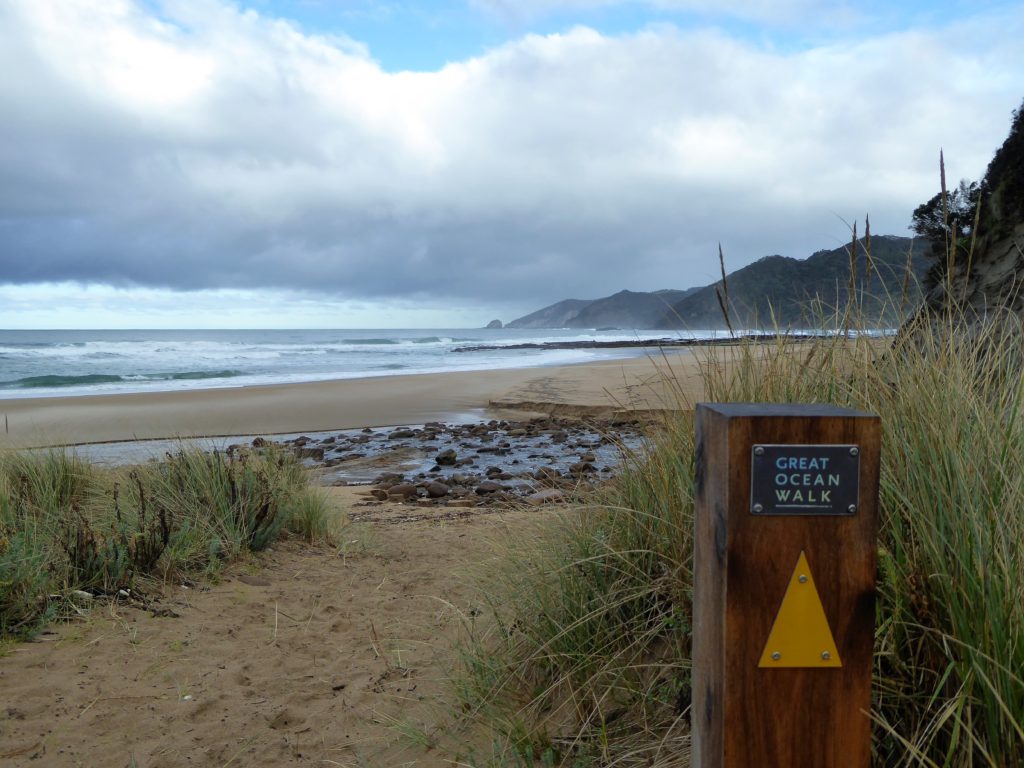
The Great Ocean Walk is a 104 kilometer walking track that begins in Apollo Bay and ends at the Twelve Apostles. In contrast to the Great Ocean Road, the Great Ocean Walk mostly hugs the Southern Ocean’s rugged coastline. This gives hikers almost exclusive access to isolated beaches, weathered cliffs, and coastal rainforest. It’s one of Australia’s best multi-day hikes.
The trail is well-marked, and the hiking is not technical or difficult. If you’re reasonably fit, you can complete the Great Ocean Walk in 5-8 days. My wife and I completed the track on a self-guided trip (reviewed below) in five days:
- Day 1: Apollo Bay to Parker Hill – 26.5km
- Day 2: Parker Hill to Castle Cove – 24km
- Day 3: Castle Cove to Milanesia Gate – 16km
- Day 4: Milanesia Gate to The Gables – 18km
- Day 5: The Gables to Twelve Apostles – 19.5km
The Great Ocean Walk spans diverse scenery. Beaches. Lighthouses. Tide pools. Rain forests. Waterfalls. Grassy hills. Weathered cliffs. Shipwrecks. And endless ocean views. You’ll catch glimpses of this country from the Great Ocean Road; however, you’ll often have this coastal landscape all to yourself on the Great Ocean Walk.
Coastal Hiking

The real draw of the Great Ocean Walk is the coastal hiking. Most of the track traces the undulating coastline. On top of the bluffs, you’ll have commanding views of crashing waves and rocky points jutting into the sea. At several points, hikers can drop down to sea level for extended beach walks (not safe at high tide). If you opt for the walk, you could easily have miles of remote beaches all to yourself.
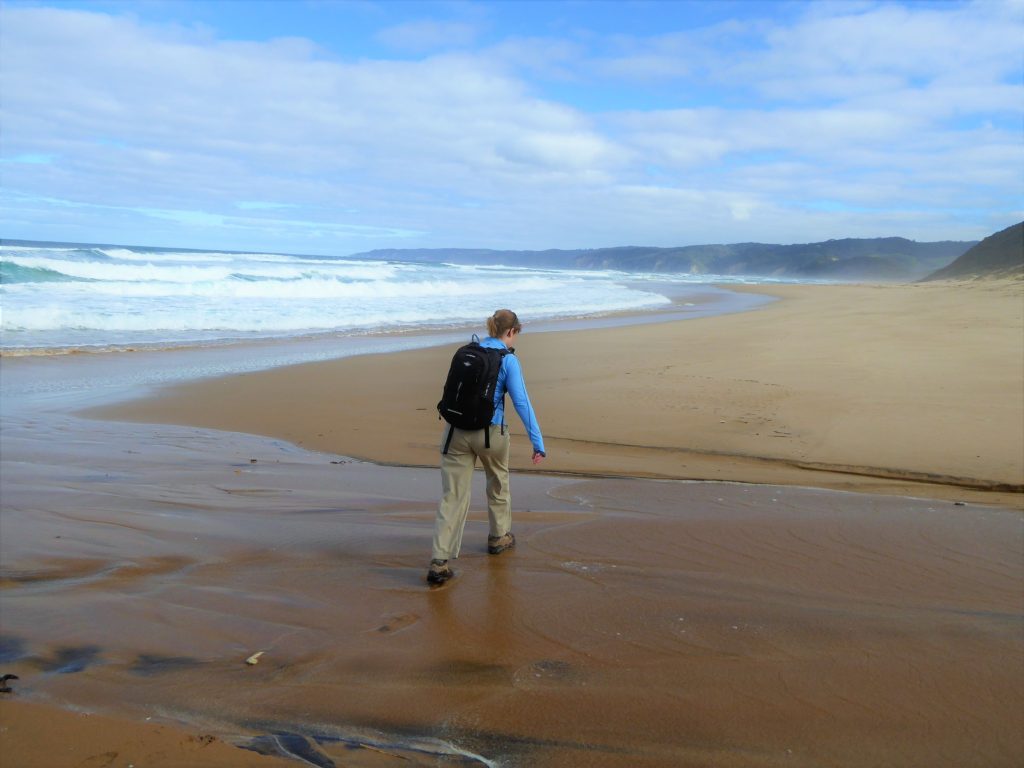
The coast grows more rugged as you travel west. The Southern Ocean seems most sinister at Wreck Beach, where big surf crashes onto an eerie tidal plain littered with corroded anchors and hardware from two centuries of shipwrecks.
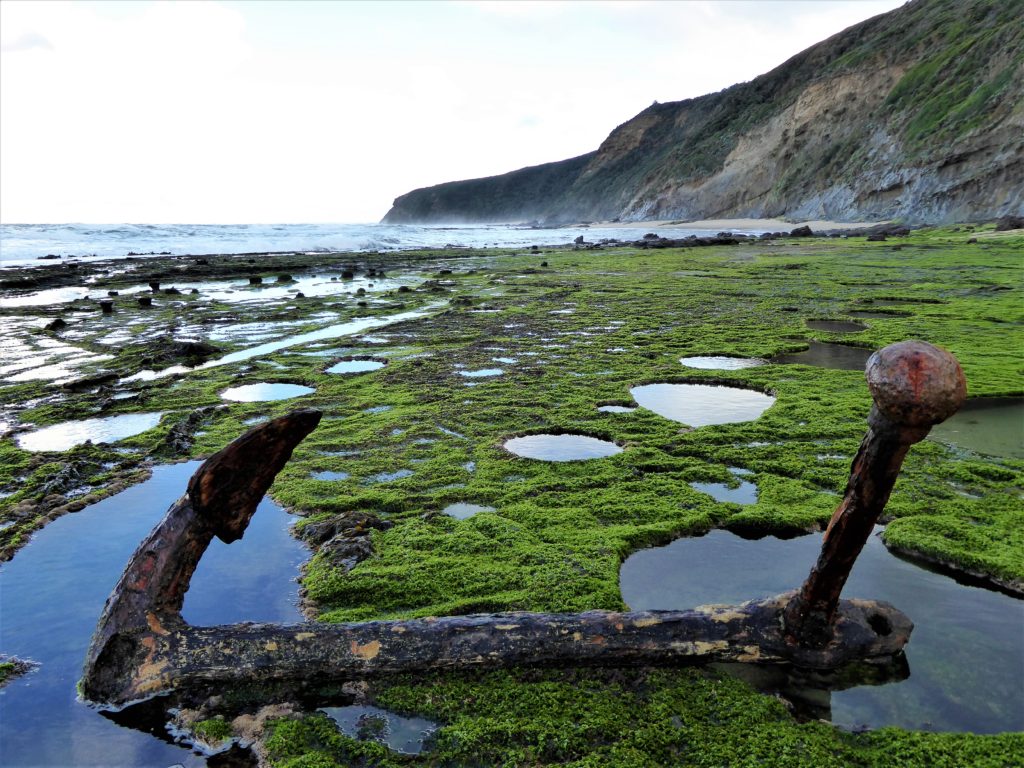
The Great Ocean Walk ends with panoramic views of the Twelve Apostles. As hordes of tourists crowd the observation decks at the Twelve Apostles, hikers will enjoy quiet views of these eight (not 12) limestone pillars from a series of scenic overlooks.
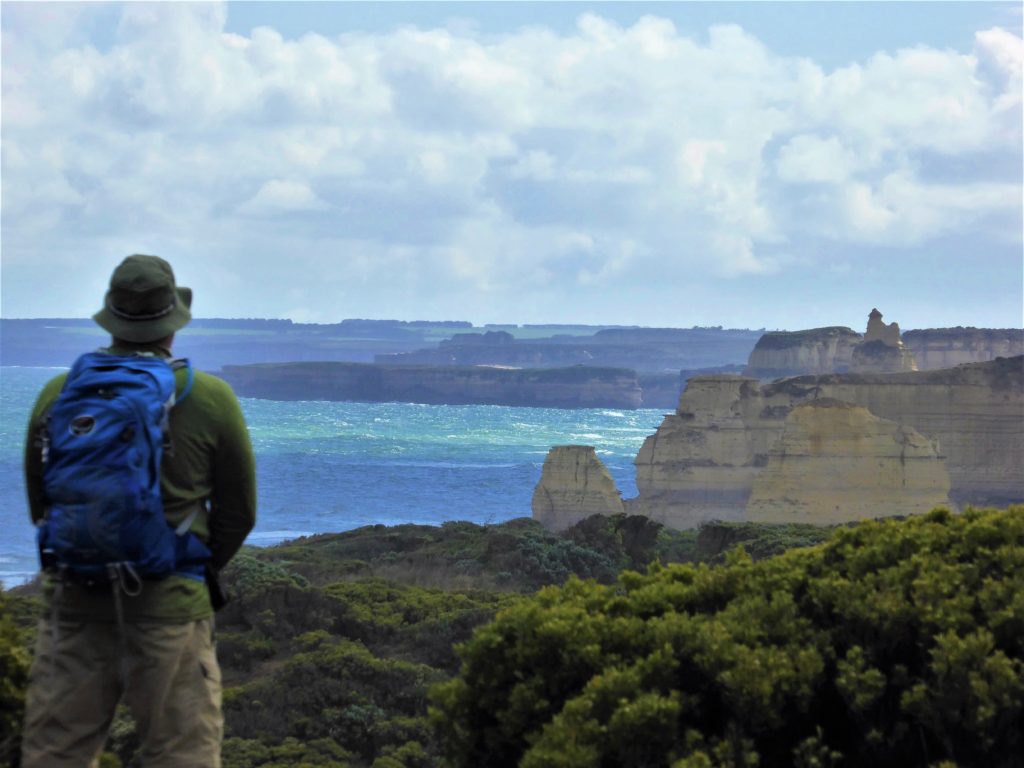
Inland Hiking
The coast may be the main draw here. But the inland sections of the Great Ocean Walk also offer nice excursions into coastal woodlands that the Great Ocean Road only skirts. With more rain than most of Australia, this stretch of the Victorian coast is lush with fern gullies, waterfalls, mountain ash trees, and temperate rainforest.

You’ll also see more wildlife once you leave the coast, including koalas, kangaroos, wallabies, and echidnas. Hikers are virtually guaranteed to spot wild koalas in the eucalyptus trees in Otway National Park:

Likewise, you’ll likely spot a mob of giant kangaroos in the pastures west of Johanna Beach.
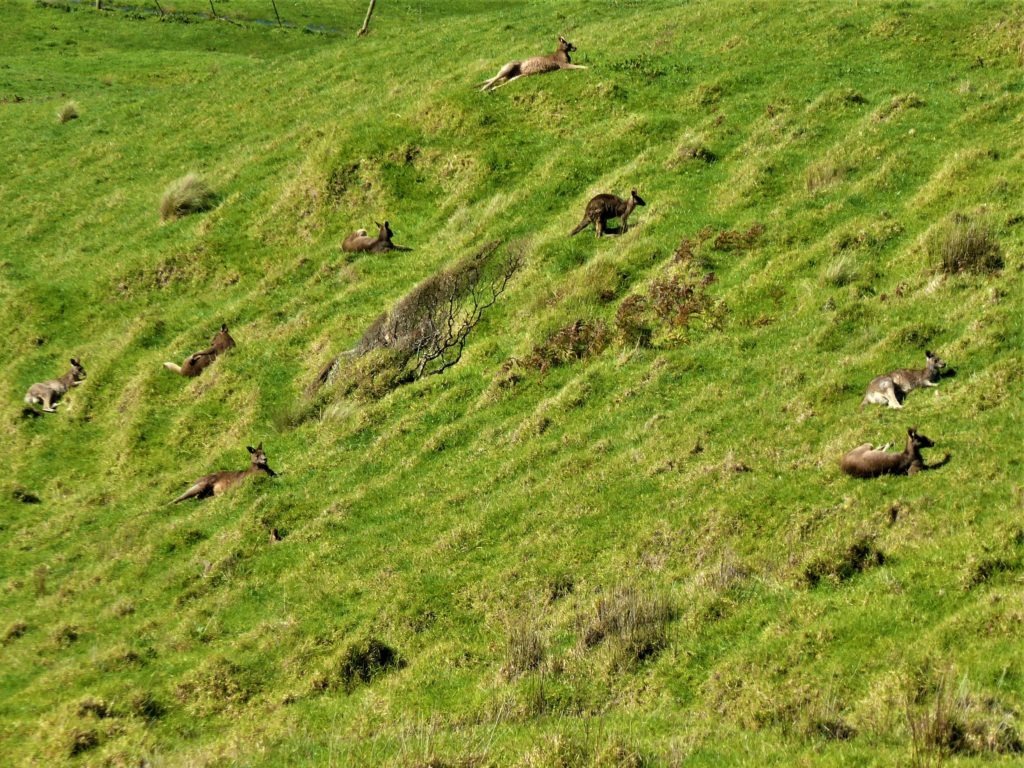
If you choose to hike instead of drive, you’ll experience much of coastal Victoria that travelers miss if they stick to the Great Ocean Road.
The case for driving
Still, most tourists will opt for the Great Ocean Road, especially if they’re travelling internationally. Even if you are an avid hiker, it may be a stretch to fit a week-long hike into your Australian holiday. If time is tight, you should probably do the Great Ocean Road as a 2-3 day side trip from Melbourne. (A day trip would be too much time in the car–and not enough time to enjoy the scenery.)
If driving is your best option, outdoor lovers should consider some side trips off the Great Ocean Road. Check out my recommended koala side trips. And spend a half-day at Tower Hill Nature Reserve (Warrnambool) to spot wild emus, koalas, and kangaroos from easy walking trails.

You can do a self-guided road trip in a rental car–if you’re comfortable driving on the left. If you’re not comfortable driving in Australia, browse the range of Great Ocean Road tours out of Melbourne. (Hint: In addition to comparing prices, compare each tour’s side trips. If possible, select one that hits the 12 Apostles at sunrise or sunset for better pictures and less obnoxious crowds.)
Great Ocean Road-Grampians Loop
Another popular road trip is a three- or four-day loop from Melbourne that combines the Great Ocean Road with Grampians National Park, a park known for its wildlife, hiking, and rock-climbing. The Grampians are two-and-half hours from the 12 Apostles, and Halls Gap is an ideal home base for Grampians day hikes and local wildlife, especially kangaroos and emus. This loop works best as a clockwise route:
- Melbourne to Port Campbell via the Great Ocean Road with side trips and optional sunset at 12 Apostles (1-2 days)
- Port Campbell to Halls Gap via Tower Hill: optional sunrise at 12 Apostles; GOR stops at Loch Ard Gorge, London Bridge, Bay of Islands; 2-3 hour walk at Tower Hill Wildlife Reserve; continue to Halls Gap for dinner & local wildlife (1 day)
- Halls Gap: Pinnacle Hike, Brambuk Cultural Centre, and local wildlife photography (1-2 days)
- Return to Melbourne (Day 4)
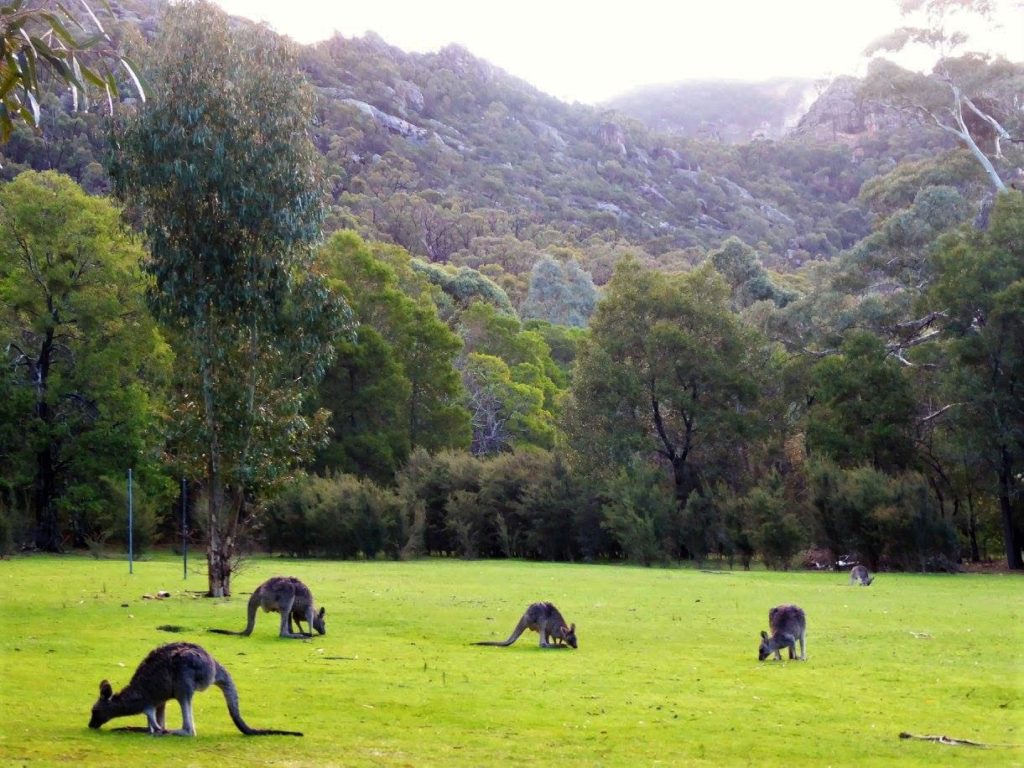
3 Hiking Choices: Great Ocean Walk
If you’re an active traveler who’s already seen some of Australia, however, you should consider the Great Ocean Walk. Honestly, the driving experience falls well short of the hiking experience. How many travelers get to hike hours of secluded coastline without seeing any people, sleep beneath koalas, and wake up to laughing kookaburras?! You’ve got three choices for hiking the Great Ocean Walk: (1) a traditional backpack, (2) guided trip, (3) of self-guided trip supported by an outfitter. Here are my thoughts:
backpacking the Great Ocean Walk
This is the choice for purists. Backpacking provides the best backcountry experience, but it can be a logistical challenge, especially if you’re traveling from overseas. For starters, international travelers must declare any outdoor gear (boots, tents, etc.) to be inspected by customs agents–and would need to buy some provisions in (expensive) Australia. Even if you backpack the Great Ocean Walk, you will need an outfitter for a shuttle transfer at the beginning or end of the hike. (Try Walk 91, Great Ocean Road Shuttle, or Timboon Taxis.) Finally, backpackers need to plan their itineraries and book campgrounds in advance (use this link) to reserve walk-in campsites on the Great Ocean Walk. That’s a lot of hassle for a walk.
If you can clear these logistical hurdles, you can have a great Australian backpacking trip. The trail is clearly signed, and hikers can have scenic overlooks and beach walks all to themselves. Some campsites have ocean views, and others have resident koalas and kangaroos.
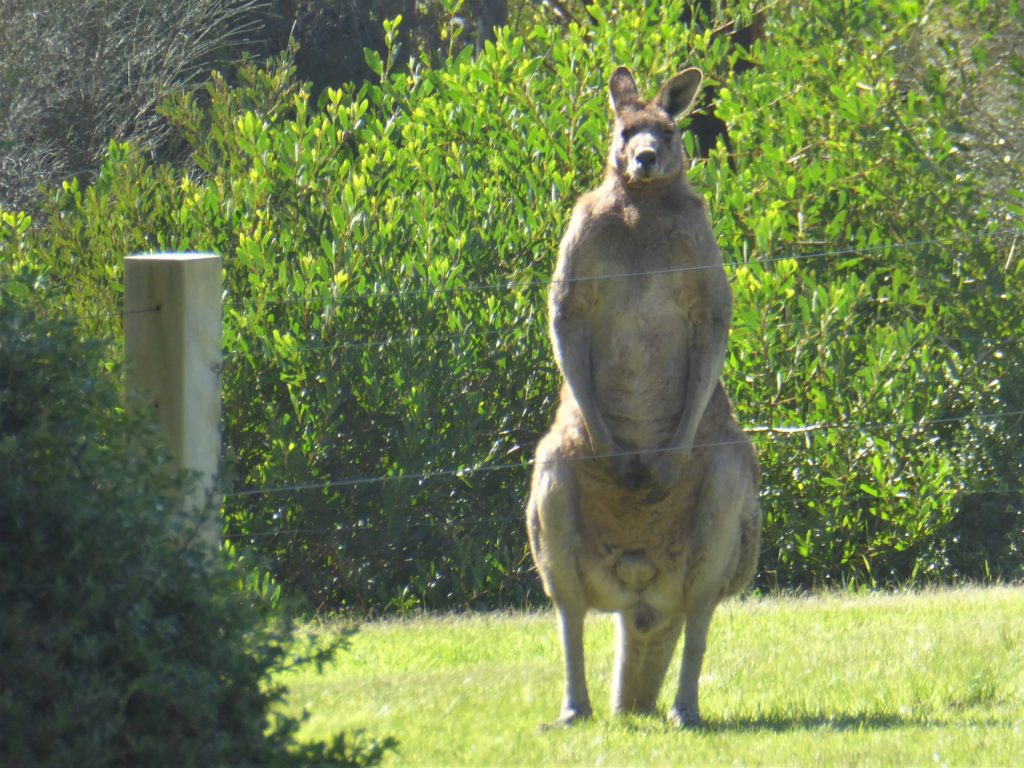
The main risks are tides and snakes. Some of the beach walks are contingent upon tides, so carry a tide chart and talk to local rangers about timing the beach crossings. Unless you hike in winter (June-August), you will see venomous snakes on the Great Ocean Walk. Snake bites are rare and usually avoidable; however, backpackers may want to rent a satellite phone/EPIRB in case of an emergency. (Do not expect cell phone reception.)
For many backpackers, these risks and logistical hassles will be worth it. If you love the outdoors (or Australian wildlife), a week of coastal backpacking could easily beat a week of museums, motels, and tourist attractions.
guided tours on the Great Ocean Walk
If you’d rather leave the logistics to local experts, you can splurge on a guided or self-guided hike. Most guided and self-guided tours are all-inclusive trips in which outfitters not only coordinate your reservations, shuttles, and gear drops, but also provide meals and private, off-track lodging.
Several outfitters offer guided hikes where pairs of trained guides lead small groups on the Great Ocean Walk. Guides can talk about the region’s natural and cultural history, and they are trained to manage unlikely emergencies on the trail, such as summer bushfires, snakebites, or medical problems. On top of that, they often cook and serve local wines.
I can understand the occasional splurge on a guided trip. After all, my wife and I enjoyed our guided trip through Tasmania’s Overland Track. But honestly, there’s no need for guides on the Great Ocean Walk. The trail is well-signed, and the ocean will always be on your left. However, if you like the convenience, comfort, or security of a guided tour, you may consider a guided hike with Australian Walking Company or Raw Travel, or splurge on a luxury trip with Hedonistic Hiking.
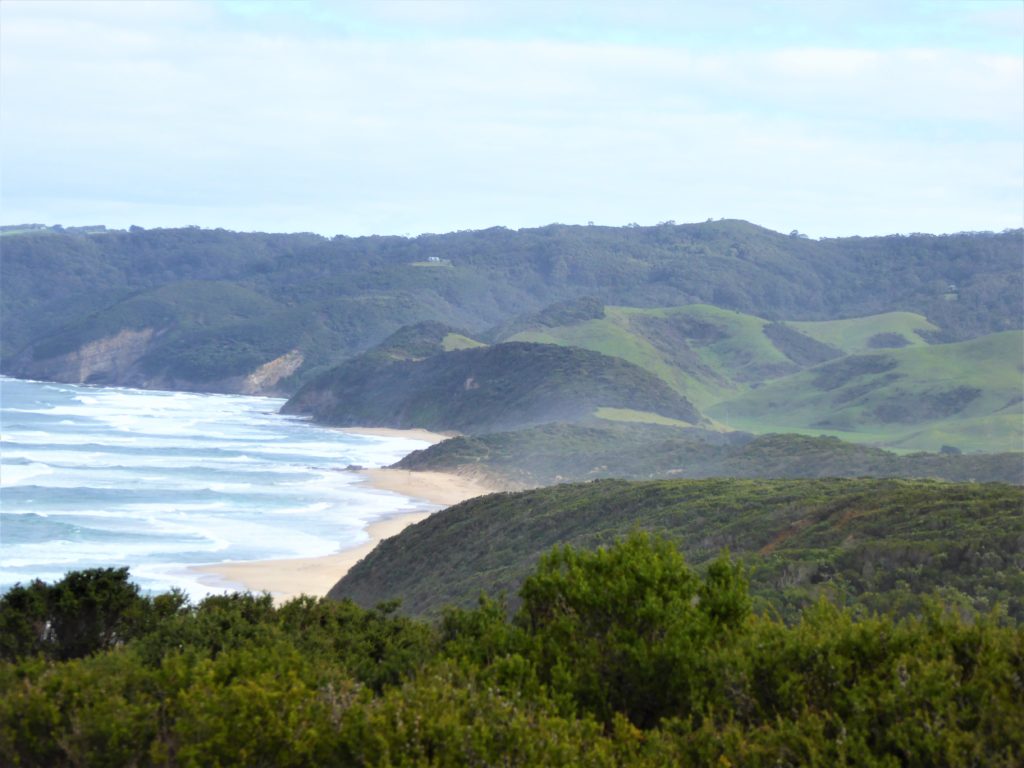
better option: self-guided hikes
For me, the smarter (and slightly less expensive) splurge would be a self-guided hike–with Walk 91 (our choice) or other licensed tour operators. There’s no need to pay a guide to remind you to keep the ocean on your left; however, it may be worth hiring a local outfitter to handle the logistics (shuttles, reservations, lodging, safety, etc) and transport your bags, so you can hike longer, lighter, and faster with a daypack. With a self-guided trip, you can leave your backpack at home (avoiding customs hassles). And you can end big hiking days in the comfort of a cabin, private home, or eco-lodge.
Hardcore hikers will choose the backpacking experience over the “slackpacking” experience. However, a self-guided hike, or inn-to-inn walk, has its perks (for those who can afford them). Outfitters not only coordinate your shuttles and reservations, but also provide you with a map, tide chart, walking notes, and emergency position-indicating radio beacon (EPIRB). Most tour operators offer a range of trips: guided vs. self-guided, catered vs. self-catered, premium vs. standard lodging, full trip vs. partial trip.
We went with Walk 91’s 5 day itinerary. (We chose standard lodging and catered meals). By day, we section-hiked the Great Ocean Walk (16-27 km/day), stopping at a pre-arranged shuttle stop (little/no wait) or walk-in accommodation (day two). By night, we enjoyed showers, a hot meal, a clean bed, and (our own) local wines. Our first two nights of lodging were fine. Our last two nights were special in a cabin with a jacuzzi, kangaroos, and sunset views.

Go for the Great Ocean Walk
You’ve got two solid choices on the Victorian coast: the Great Ocean Road and the Great Ocean Walk. If you have limited time to see Australia, you should probably choose the Great Ocean Road. If you’ve already done some Australian traveling, however, you may decide that a week of coastal hiking would be heaps better than a week of highways, motels, and tourist attractions. As most hikers know, tourists miss out if they always stick to the road.
Happy hiking… Happy traveling…
